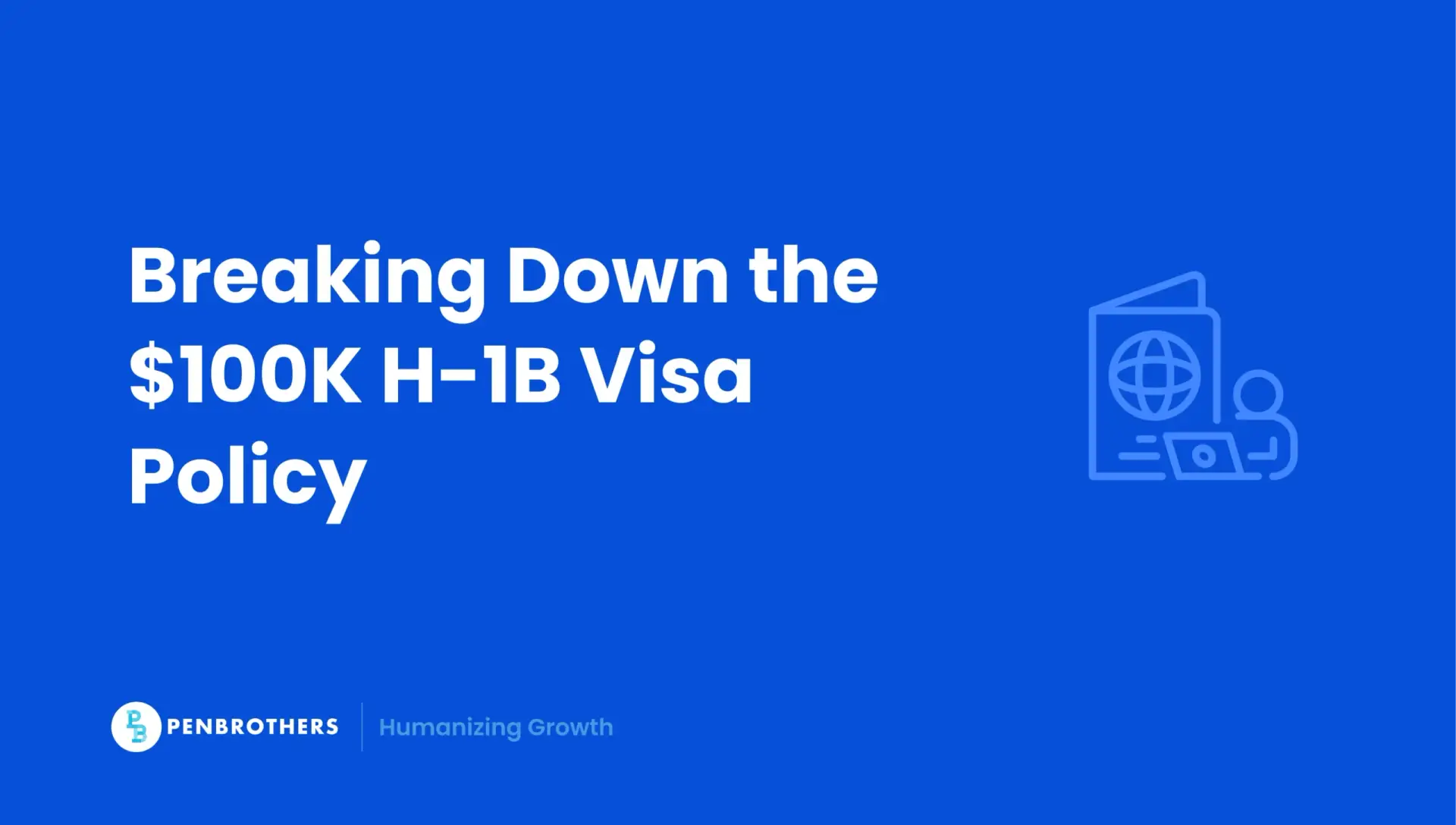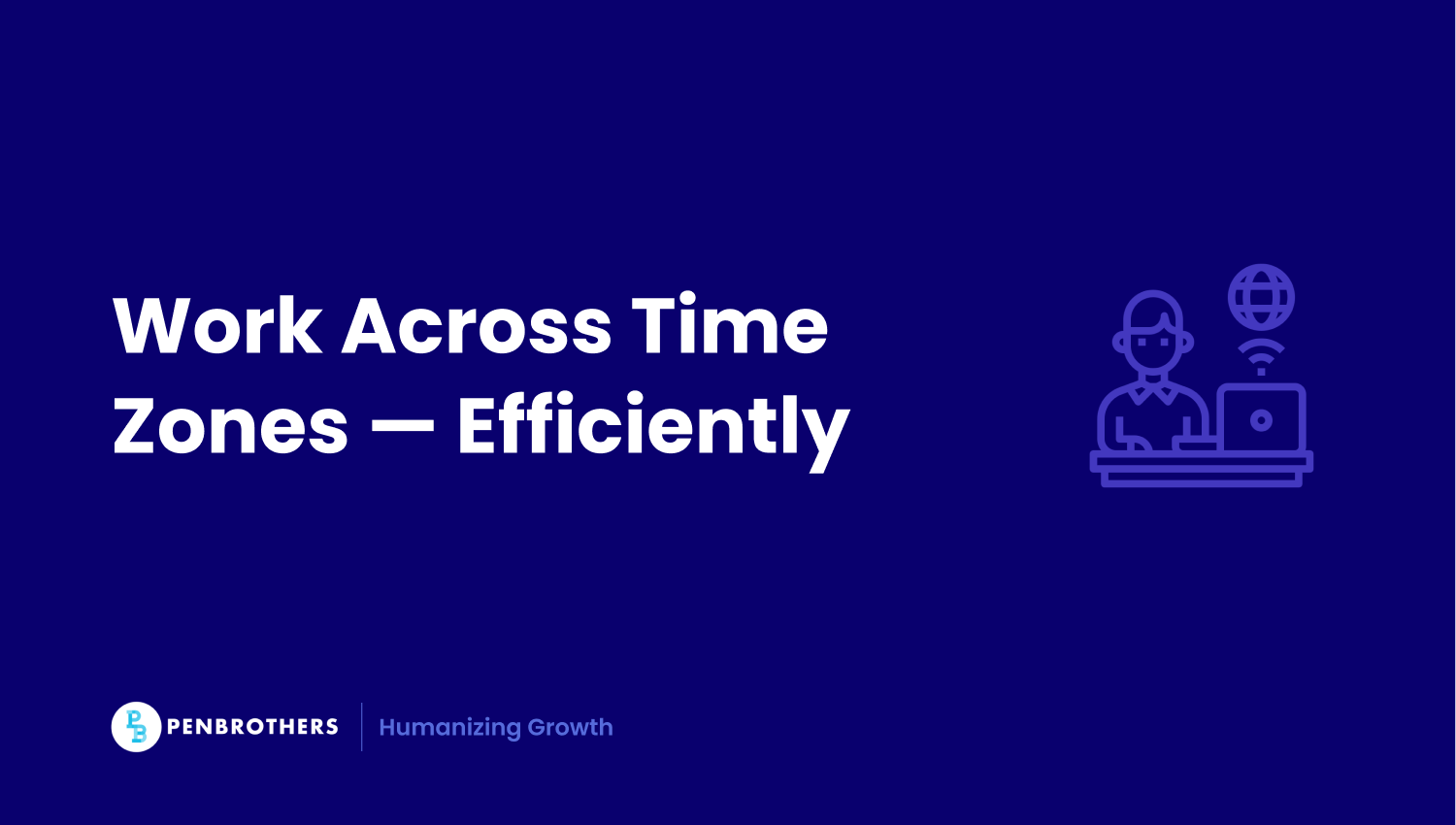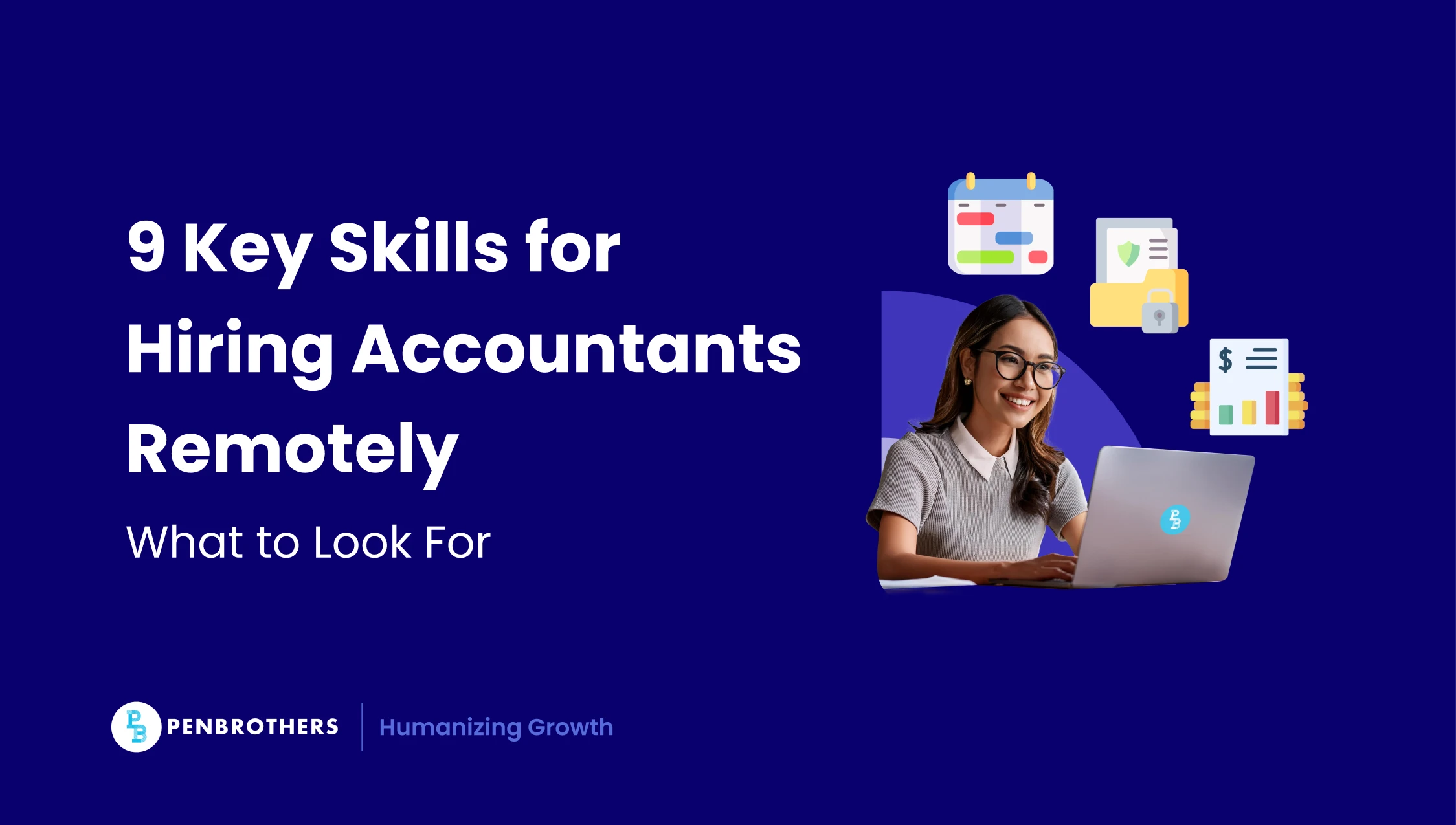What's Inside?
The H-1B Visa $100K Fee: Policy Details and Industry Reactions

September 19, 2025, started like any other Friday until a news alert changed everything for many U.S. businesses: a $100,000 fee for new H-1B visa petitions. Within hours, tech companies were sending urgent emails, immigration lawyers were fielding panicked calls, and families were making difficult decisions about travel plans.
The H-1B visa program serves as America’s primary gateway for skilled foreign workers. When you dramatically alter its cost structure, the ripples extend far beyond immigration law, touching technology companies, universities, hospitals, and the global competition for talent.
What began as a policy announcement quickly became a case study in how quickly uncertainty can reshape business decisions and personal lives across multiple countries.
Key Takeaways
- A New $100,000 Fee Fundamentally Changes the H-1B Landscape: A new policy has been introduced imposing a $100,000 one-time fee for new H-1B visa petitions for individuals located outside of the United States. This policy does not apply to current H-1B holders or those seeking renewals.
- Intended to Protect US Jobs, It Will Likely Accelerate Offshoring: The stated rationale for the fee is to make it prohibitively expensive to replace American workers with cheaper foreign labor. However, the most probable strategic consequence is that companies will accelerate their move to offshoring and nearshoring, opting to build entire teams abroad rather than pay the high fee to bring individual workers to the U.S.
- A Disproportionate Impact on Smaller Organizations: While large tech corporations may be able to absorb the new fee for their most critical hires, the policy is expected to disproportionately impact startups, universities, and healthcare organizations, for whom a $100,000 cost per hire is prohibitive.
- Creates Significant Global Talent and Legal Uncertainty: This policy makes the U.S. a less attractive destination for global talent when compared to countries like Canada, the UAE, and Australia, which offer clearer and more affordable immigration pathways. The fee also faces significant legal challenges regarding executive authority, creating a landscape of policy uncertainty for businesses.
What Changed: The $100K H-1B Visa Fee Explained
The initial announcement created immediate confusion. Commerce Secretary Howard Lutnick’s television appearances suggested the $100,000 fee might be annual and apply to renewals. For the roughly 500,000 current H-1B visa holders, this raised the specter of owing six figures annually just to maintain their status.
The reaction was swift. Immigration attorneys advised overseas clients to return to the U.S. before the September 21st deadline as flight prices surged amid the scramble. Major corporations issued travel warnings. Families found themselves calculating impossible choices: stay abroad and risk everything, or spend thousands on emergency flights they couldn’t afford.
A post by @drunkJournalist on Twitter reported, “Chaos in Emirates flight at SFO Airport. Delayed by 3 hours after many Indian H1B holders bound for India disembarked from the plane after hearing the news of $100K fees for H1B. Many Indian passengers apparently left the aircraft after receiving calls from their employers not to leave the US.”
Clarifications followed within 24 hours:
- The fee is one-time, not annual
- It applies only to new petitions for people outside the U.S.
- Current H-1B holders and pending renewals remain unaffected
- Implementation begins with the next lottery cycle
Here’s the official fact sheet: President Donald J. Trump Suspends the Entry of Certain Alien Nonimmigrant Workers
The relief was palpable, but the damage to confidence had been done. The new fee stacks on top of existing costs that already run several thousand dollars per hire, fundamentally changing the economics of hiring foreign talent.
The Rationale Behind the Policy
The administration built its case around protecting American workers from what it characterizes as systematic abuse of the H-1B program. The evidence they cite tells a concerning story: IT professionals now account for over 65% of H-1B recipients, up from 32% in 2003. Some companies received thousands of H-1B approvals while simultaneously laying off tens of thousands of American employees.
Perhaps most troubling were reports of American IT workers being required to train their foreign replacements under non-disclosure agreements as a condition of receiving severance packages.
The policy’s logic appears straightforward: make H-1B visas expensive enough that companies will only use them for genuinely exceptional talent, not as a way to hire $60,000 engineers instead of $100,000 Americans. The $100,000 fee essentially creates a market-based allocation system where only the highest-value positions justify the cost.
This approach builds on the 2017 “Buy American, Hire American” executive order, which sought to prioritize higher-skilled and higher-paid workers in the H-1B program through administrative means.
Industry Reactions and Immediate Impact
The announcement sent shockwaves through corporate America. Amazon, which received over 10,000 H-1B approvals in 2025, suddenly faced potential costs exceeding $100 million if just 10% represented new overseas hires subject to the fee. Similar calculations were happening in boardrooms across Silicon Valley.
The impact varied dramatically by organization size. Large tech companies, while concerned about costs, generally have the resources to absorb the fee for critical hires. The real devastation hit smaller players. Startups operating on venture capital found the fee prohibitive. Universities balked at paying $100,000 to hire a postdoc researcher. Rural hospitals couldn’t justify the cost for a foreign-trained physician.
Social media captured the raw human impact from both sides of aisle:
“For Indian techies, the American dream just got killed.” — @Zakka_Jacob
“Now, more than ever, India must invest deeply in its own innovation and skill ecosystem, creating world-class labs, startups and opportunities right here at home.” — @raghav_chadha
“No more firing Americans while importing foreign replacements on the cheap. 🇺🇸🔥” — @RodDMartin
“Trump’s move won’t kill Indian IT exports, but it forces rebalance.” — @Normal_2610
“Whatever benefits corporations more, i.e. increase in offshoring” — QwestionAsker
“It’ll probably just cause even more offshoring. A lot of tech companies are already offshoring anyways.” — letsgedditbois
“I have a solution to this – let’s hire people remotely through EORs and shift the entire narrative to a global, more approachable job market for talented people worldwide. Equally, the gig economy can also benefit from this cruel move by hiring more freelancers. And that is how this situation can actually reshape the future of work… if companies are smart. 🙏🌎” — Nadia Harris
The U.S. Chamber of Commerce expressed concerns about impacts on “employees, their families, and American employers.”
Stock markets provided their own verdict. Shares of Indian IT services firms like Infosys and Wipro dropped 2-5% before partially recovering, as investors priced in business model disruption rather than celebration of worker protection.
The Outsourcing and Offshoring Shift
The policy creates powerful incentives for exactly what it aims to prevent: moving American jobs offshore. Indian IT giants like TCS, Infosys, and Wipro built their business models around bringing engineers to U.S. client sites. The $100,000 fee further strains this approach, making it economically unviable for most non-critical roles amid already declining onsite reliance.
The work doesn’t disappear—it relocates. Companies will accelerate expansion of Global Capability Centers in India rather than pay premium visa costs. Instead of bringing one data scientist to California for $100,000 plus visa fees, it becomes more economical to hire an entire data science team in Bangalore.
Mexico and Latin America stand to benefit significantly from nearshoring trends. Companies gain timezone alignment and cultural proximity without H-1B complications. The TN visa under USMCA provides clear alternatives for Mexican professionals.
There’s also potential for a “reverse brain drain,” where U.S.-trained Indian professionals return home, bringing Silicon Valley experience and capital to fuel local tech ecosystems. What’s intended as protection for American workers could inadvertently strengthen competing economies.
Related articles:
- The U.S. Government Shutdown Is a Wake-Up Call for Offshore Resilience
- Trump on IT Outsourcing: HIRE Act Facts, Risks, and Next Steps
- Outsourcing to India and the HIRE Act: What U.S. Companies Should Do Now
- Outsourcing Tax: What Is Official, What Is Proposed, What Is Noise
- Fed Rate Cuts and Outsourcing in 2025: Executive Guide
Broader Global Talent Implications
The timing of this policy shift is particularly notable given how aggressively other countries are competing for skilled workers. While the U.S. erects $100,000 barriers, Canada offers transparent paths to permanent residency through its Express Entry system. The UAE provides 10-year Golden Visas with zero income tax. Australia fast-tracks skilled professionals in targeted sectors.
For international students, the calculation becomes stark. The H-1B visa traditionally served as the bridge from U.S. education to employment. With that pathway now requiring employers willing to pay six figures for visa processing, the value proposition of American degrees shifts dramatically.
Universities are already concerned about potential enrollment declines. International students typically pay full tuition, subsidizing domestic student costs and funding research programs. If these students increasingly choose countries with clearer study-to-work pathways, the impact extends beyond immigration policy to the competitiveness of American higher education.
The global talent market doesn’t pause for policy uncertainty. It adapts. Skilled professionals are already reassessing their career strategies, considering countries where the path from education to work to permanent residency remains predictable and affordable.
Legal Questions and Policy Uncertainty
Legal experts widely question whether the executive branch has authority to impose such substantial fees on a congressionally-established visa category. Immigration attorneys argue this amounts to “executive taxation without congressional approval,” exceeding presidential fee-setting powers.
The rapid implementation timeline (effective just two days after signing) potentially violates Administrative Procedure Act requirements for public notice and comment periods, bypassing typical APA notice-and-comment requirements.
Most legal experts expect successful court challenges, but the immediate disruption serves its purpose regardless of eventual legal outcomes. Companies must now factor political volatility into long-term talent planning.
Even if courts ultimately block the fee, the precedent of overnight policy changes forces businesses to diversify their talent strategies to reduce dependence on any single country’s immigration system.
What Happens Next: Strategic Considerations
Organizations across sectors are reassessing their approaches to global talent in light of this policy shift.
For policymakers, the path forward likely requires congressional action to create stable, comprehensive immigration reform. A wage-based allocation system could achieve worker protection goals while providing predictability for businesses. Different treatment for universities, hospitals, and private sector roles might address diverse stakeholder needs without the blunt impact of a uniform fee.
For corporations, diversification becomes essential. Smart companies are building robust nearshore capabilities in Mexico and Canada, expanding offshore centers in India and Eastern Europe, and exploring alternative visa categories like O-1 for extraordinary ability. The goal isn’t abandoning the U.S. market but ensuring business continuity regardless of political winds.
For skilled professionals, the environment demands strategic flexibility. Canada’s Provincial Nominee Programs, the UAE’s Golden Visa, and Australia’s skilled migration pathways offer more predictable routes to long-term residency. The U.S. remains attractive for short-term career development but no longer serves as the default destination for building a permanent life.
The $100,000 H-1B visa fee will likely achieve some of its stated objectives. Companies will sponsor fewer foreign workers for routine positions, and the program will skew toward higher-paid, more specialized roles. Some American workers in affected sectors may face reduced direct competition.
However, the policy’s broader effects work against stated goals. Rather than bringing jobs back to America, it creates incentives to move work offshore entirely. Instead of strengthening U.S. competitiveness, it signals retreat from the global talent market just as other countries actively court the same skilled workers.
Legal challenges will probably succeed, but the damage to business confidence and America’s reputation as a talent destination may prove lasting. Smart companies are already building more geographically diverse strategies, reducing their dependence on U.S. immigration policy.
The ultimate impact will depend on how quickly alternative policies emerge and whether lawmakers can craft immigration reforms that balance worker protection with economic competitiveness. For now, the only certainty is continued uncertainty; and in the global competition for talent, uncertainty becomes a significant disadvantage.
For companies navigating these changes and exploring offshore talent solutions, understanding the available alternatives becomes crucial. Whether you’re considering your first offshore hire or expanding existing global teams, connecting with experienced providers can help clarify options in an increasingly complex landscape.
Frequently Asked Questions
$100,000 H-1B visa fee? It is a $100,000 one-time fee that will be applied to new H-1B visa petitions for skilled foreign workers who are currently located outside of the United States.
No. According to clarifications, the $100,000 fee does not apply to individuals who are already in the U.S. on an H-1B visa, nor does it apply to those who are applying for a visa renewal or extension.
The administration’s stated purpose is to protect American workers by making it financially difficult for companies to use the H-1B program to hire foreign workers for lower salaries than their American counterparts, thereby encouraging them to hire locally.
The most likely impact is that it will accelerate the business trend of offshoring and nearshoring. Instead of paying the $100,000 fee to bring one skilled worker into the U.S., many companies will find it more economical to hire an entire team in a location like India, the Philippines, or Mexico.
The policy faces significant legal uncertainty. Many legal experts question whether the executive branch has the authority to impose such a large fee without the approval of Congress and whether its rapid implementation violates the Administrative Procedure Act. It is widely expected to be challenged in court.




